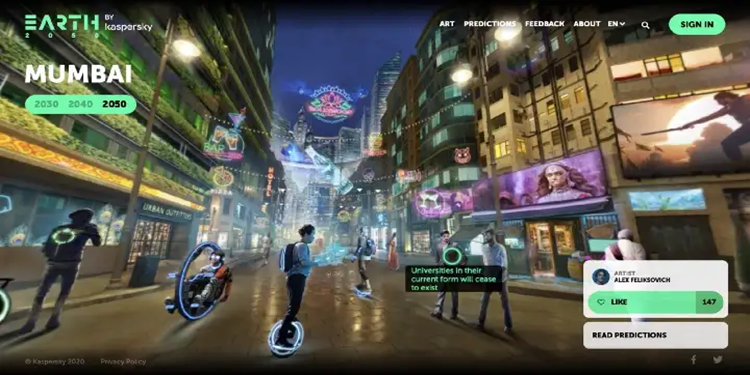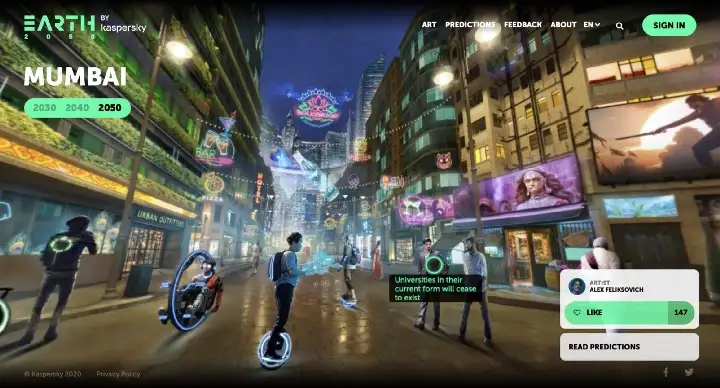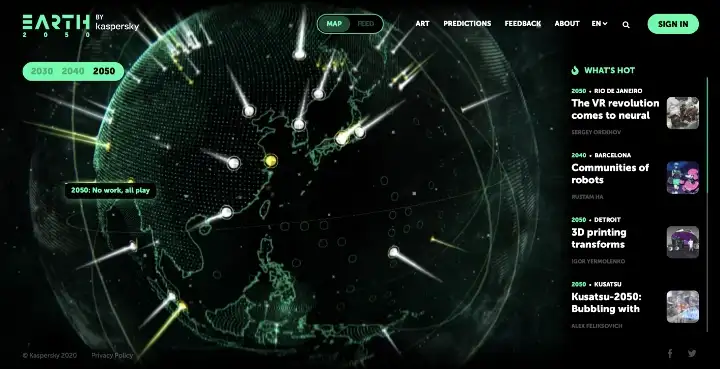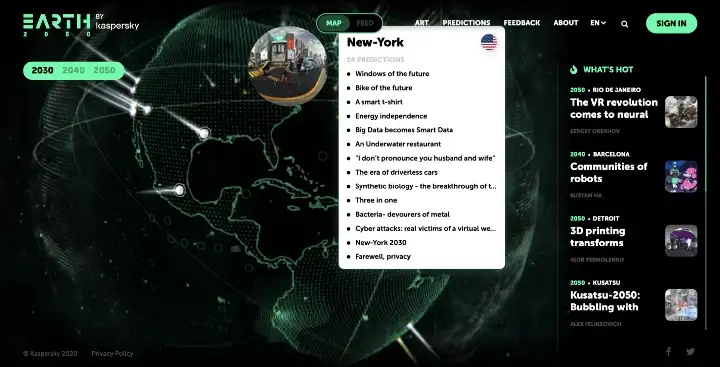Daniel Pereira

“From cities and transport to food and wearables, design fiction spawns projects that are not only food for our dreams but also an incentive for a better future.”
Speculative Design: “a design practice that is concerned with future design proposals of a critical nature. The term “speculative design” was popularised by Anthony Dunne and Fiona Raby as a subsidiary of critical design. The aim is not to present commercially driven design proposals but to design proposals that identify and debate crucial issues that might happen in the future. Speculative design is concerned with future consequences and implications of the relationship between science, technology, and humans. It problematizes this relation by proposing provocative future design scenarios where technology and design implications are accentuated. These provocative design proposals are meant to trigger the debate about future challenges. Speculative design proposals might seem subversive and irreverent in nature as they are meant to initiate discussions not to be market products.” (1). For more, see the work of Syd Mead.
As the 27th Conference of the Parties to the United Nations Framework Convention on Climate Change (COP27) meets in Sharm el-Sheikh, Egypt, we dedicate this installment of the Speculative Design Series to the future of the planet.
Giorgia Lombardo is the Editor of DeMagSign and Head of Brand & Comms at Design Matters. Earth 2050 was included in Lombardo’s 2020 post on Medium about 8 Spectacular Speculative Designs That Will Blow Your Mind. Lombardo’s description of speculative design is eloquent and complements the aforementioned working definition we use for this series:
“From cities and transport to food and wearables, design fiction spawns projects that are not only food for our dreams but also an incentive for a better future. Here, we cherry-picked some of the most vivid and beautiful examples of speculative design. Speculative Design is one of the most exciting ways for designers to practice problem-solving by design. Using Design Thinking and other methods, we can broaden our scope and develop boundary-pushing systems and prototypes that spur discussion about alternative ways of being and encourage imagination to flow freely. Design speculations have the potential to become the catalysts for redefining our relationship to reality and cultures; the results are truly inspiring, with a seductive vividness and a promise of a far future that is not far from science fiction stories.” (1)
Take a step into the future of the planet @ Kapersky’s Earth 2050.

What Mumbai might look like in 2050. From Earth 2050
About the Project
Earth 2050 [is] a site about the future as seen through the eyes of futurologists, scientists, and Internet users from all corners of the globe. Select a year — 2030, 2040, or 2050 — and study the predictions for different cities and countries: what will happen to our planet, what our lives will be like, what jobs we will have, what we will eat, and more. Got anything to add? Vote, comment, and make your own predictions.
This project was created and is supported by Kaspersky, which for more than 20 years has been developing innovative solutions to protect critical infrastructure and cities, businesses, and ordinary users. We at Kaspersky try to make the world a safer place. To do this, it’s important to have a mental picture of what we can expect in the future: how people will live in 20 or 30 years’ time, what needs to be protected, what threats will exist, and how the physical world will interact with the virtual. Therefore, we are looking for a variety of opinions — from experts, futurologists, and simply anyone who cares about the future.
The more we consider the likely trajectories of society and technology, the more we can foresee — and thus make our common future better and more secure.

Map with predictions for 2050. From Earth 2050

What New York might look like in 2030. From Earth 2050
Some Earth 2050 Predictions
Space ransomware by Marco Preuss, Director, Global Research & Analysis Team, Europe at Kaspersky. Marco began his career with Kaspersky back in 2004 as a Technical Consultant, providing expert knowledge on Linux and Unix-based systems: In 2050, the first stations on the moon and probably mars will exist. As communication is the core of current and future life, here lies also the weakness. The complexity to establish reliable and stable communication to inter-space stations is huge and is an interesting target for espionage and targeted modification of important communication packages. The one who controls the communication channels controls the non-earth stations. Critical information such as research data can be exchanged directly into money by criminal groups by tapping the “wires”.
Direct Neural Interfaces (DNI) create a new technical revolution by contributor Josh Harp: by 2050, Once the technology for directly implanted neural interfaces is introduced, the cognitive disadvantage to those who choose to limit themselves to nonsurgical options are so great that employers begin requiring that their employees be augmented. This creates a significant amount of global unrest and religious backlash.
Eastern Garbage Continent cyberstate by contributor Vasily Kobelev: By 2030, the large garbage spot in the Pacific Ocean, with an area of3 million sq. km. (1500 x 2000 km) — the size of Greenland, ceased being the concern solely of Greenpeace and other environmental organizations. The global environmental crisis in the neutral waters of the Seven Seas was finally addressed by the UN. Created in 2025, the first international floating environmental platform for the disposal of plastic waste reached its design processing capacity of 100,000 tons per year. It would take one such installation a century to recycle all the plastic dumped into the oceans in just one year. Dissatisfied with the UN’s response to solving the world’s environmental problems, 239,711 citizens of the Garbage Islands state, unrecognized by the UN, crowdfunded an autonomous floating station to collect plastic waste in the ocean, create floating polymer blocks, and increase the area and immersion depth of their plastic homeland. The growing island was declared the capital of the cyber state Eastern Garbage Continent.
Drone hunting, Robin Hood style by contributor Mersey Shelley: By 2050, as the number of drones grew, people got tired of these flying bots used for spying and advertising. Imagine a butterfly that hangs right before your face while targeting your eyes with stereoscopic commercials! The first cases of drone hunting were plain self-defense but soon it turned into a sort of public sport. Since gun shooting is generally condemned nowadays, people use low-tech weaponry – bows, crossbows, slingshots. In youth gangs and clandestine Robin Hood clubs, hunters boast their scores of downed drones. Governments try to fight this illegal entertainment but human rights advocates protect archers as “fighters for privacy”, so the issue is still unsolved. Some activists insist that drone hunting must become an official sport.
No comments:
Post a Comment